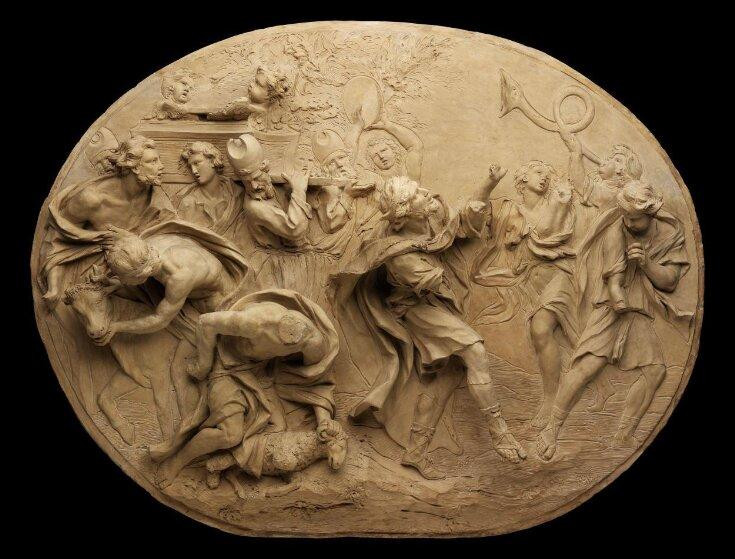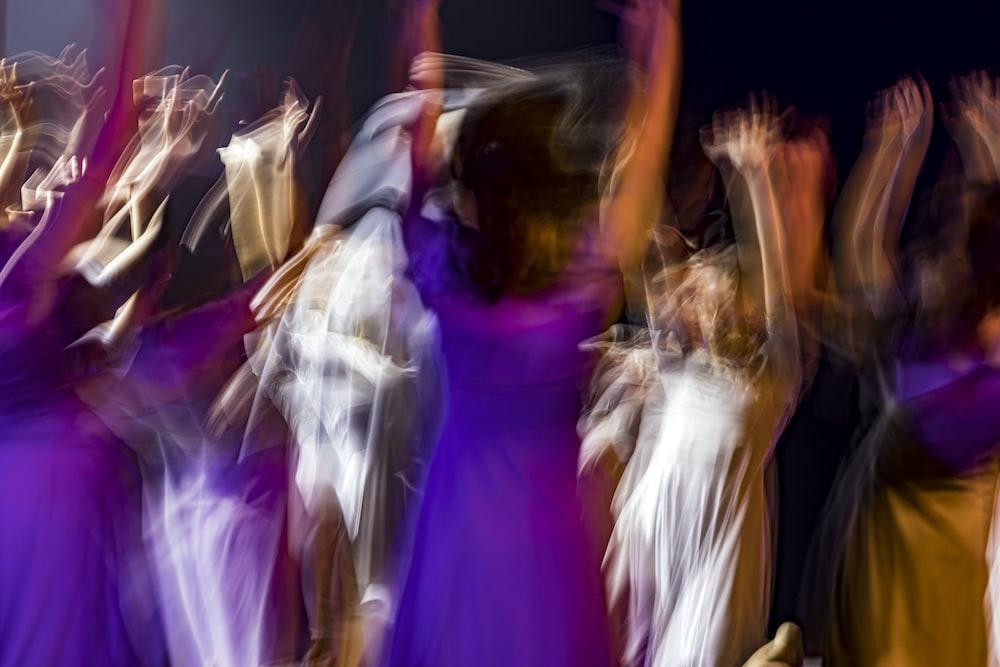Christian culture is rich with traditional sayings, many drawing inspiration from Psalms, liturgies, and biblical narratives, as well as societal norms. Among these, you might encounter the expression, “He danced without leaving room for Jesus,” or “She is dancing without leaving room for Jesus.” Interestingly, you won’t find this exact phrase in the Bible. So, where does this popular saying originate, and what does it truly mean?
Understanding “Danced Without Leaving Room for Jesus”
When someone remarks, “They danced without leaving room for Jesus,” they’re suggesting that a couple was dancing extremely close, minimizing the space between their bodies. In Christian contexts, particularly within more conservative circles, there’s an expectation for men and women to maintain enough physical distance while dancing – ideally, enough space to hypothetically fit another person between them. This imaginary “extra person” is humorously suggested to be Jesus. The underlying implication is that improper behavior is less likely when one imagines Jesus is present, chaperoning the interaction.
This saying, therefore, becomes a playful yet pointed way to comment on a couple dancing too intimately, according to certain Christian standards of modesty and purity. It’s a cultural idiom designed to encourage restraint and awareness of physical boundaries in social interactions, particularly between unmarried individuals.
Leave Room for Jesus and the Importance of Purity
The concept of “leaving room for Jesus” is deeply intertwined with the Christian value of physical purity. Purity, in a broad sense, encompasses various aspects of life, but the Bible frequently emphasizes sexual purity as a significant way to honor God with our physical bodies. The Apostle Paul, in 1 Corinthians 6:18-20, powerfully articulates this: “Flee from sexual immorality. Every other sin a person commits is outside the body, but the sexually immoral person sins against his own body. Or do you not know that your body is a temple of the Holy Spirit within you, whom you have from God? You are not your own, for you were bought with a price. So glorify God in your body.”
However, the definition of “sexual immorality” can be interpreted differently among individuals and denominations. Christian doctrine generally holds that sexual intimacy is divinely intended for marriage. Consequently, sexual activity before marriage is often considered sinful. Within this framework, excessive physical closeness can be seen as a step towards inappropriate touching and potentially, sexual immorality. This is why the “leave room for Jesus” adage isn’t limited to dance scenarios. Variations of the phrase are commonly heard in various contexts:
- Leave room for Jesus.
- Save room for Jesus.
- Make room for Jesus.
Regardless of the setting, the underlying message remains consistent. Whether a couple is sitting together on a couch, sharing a booth at a restaurant, or spending time alone at home, the principle of “leaving room for Jesus” applies.
The intention behind “leaving room for Jesus” is to proactively avoid temptation. The logic suggests that maintaining physical space reduces the likelihood of premature intimacy. By adding the element of a “supernatural Chaperone” – Jesus, who empowers believers to live a holy life – the saying serves as a humorous yet serious reminder to couples to consider their actions and boundaries before escalating physical intimacy.
It’s crucial to acknowledge that not all interactions between couples are inherently sinful, and not all affectionate touch is inappropriate. However, dancing, especially close dancing, is often perceived within conservative Christian circles as a potentially “risky venture” for those committed to purity.
 Couple dancing closely, suggesting they are not leaving room for Jesus
Couple dancing closely, suggesting they are not leaving room for Jesus
The Origins of Dancing Without Leaving Room for Jesus
Dance, in its essence, can be a very sensual form of expression. In the animal kingdom, dance plays a significant role in courtship rituals. A captivating dance can be instrumental in attracting a mate. Similarly, human dance can also be a tool for attraction and even seduction. While dance can be a harmless and enjoyable social activity, the inherent sensuality creates a blurred line for many Christians, leading to hesitation about engaging in it. The phrase “leave room for Jesus” likely emerged from this desire to establish clear and healthy boundaries for Christian believers navigating social interactions, particularly those involving dance.
The precise historical origin of the phrase “danced without leaving room for Jesus” is not well-documented. However, given that many religions emphasize standards of purity and modesty, it’s not surprising that such an idiom would develop to communicate expectations around physical boundaries, especially within a Christian context.
It’s widely speculated that the phrase gained traction during one of the sexual revolutions of the 20th century. Periods of increased sexual permissiveness, such as the 1920s, 1960s, and 1990s, saw shifts in societal attitudes toward sexuality. Conservative Christian communities often responded by seeking to protect their youth from what they perceived as the moral decline associated with dance halls and secular perspectives on human sexuality.
These cultural shifts spurred the rise of numerous purity movements and programs, including purity pledges, purity rings, and purity balls, particularly in the 1990s. Coining phrases like “leave room for Jesus” was likely one of the communicative strategies that evolved during these eras to reinforce the importance of physical and sexual purity within these communities.
Modern Uses of Leave Room for Jesus
Today, you’ll still hear people use phrases like “They danced without leaving room for Jesus” or “Save room for Jesus.” However, the context has often shifted. While the phrase can still be used as a genuine admonishment for maintaining purity, it’s more frequently employed satirically or humorously.
The phrase has permeated modern popular culture, appearing in diverse contexts. For example, it was featured in an episode of the acclaimed ABC show, Black-ish, demonstrating its recognition beyond religious circles. It has also become a popular online meme, often used to jokingly comment on situations where physical closeness might be perceived as excessive or humorous. The classic movie Footloose, while not directly using the phrase, explores a similar theme, centering its plot on a conservative community that views dancing as a corrupting influence on young people’s morality.
Interestingly, in recent times, churches and other organizations have creatively repurposed “leave room for Jesus” to promote social distancing. During the COVID-19 pandemic, some congregations playfully used posters and messages with the phrase to encourage attendees to maintain physical distance to slow the spread of the virus, giving the saying a contemporary and health-conscious twist.
Furthermore, the variation “make space for Jesus” is evolving to encourage individuals to create room for Jesus’s influence in their increasingly busy and distracted lives. In an era of constant connectivity and packed schedules, reminding believers to intentionally “leave room” for spiritual reflection and connection with God is becoming a relevant and important metaphorical application of the original phrase.
Examples of Dancing in the Bible
Dancing is not an uncommon activity in the Bible. It held significance in ancient Hebrew culture, serving as a form of worship, praise, and celebration of festivals and victories. The Bible presents a nuanced view of dance, showing it in both positive and negative lights, depending on the context and intention.
People Who Danced for God in the Bible
The Bible provides several examples of individuals and groups dancing as an expression of praise and worship to God.
Moses’s sister, Miriam, a prophetess, led women in song and dance to celebrate God’s miraculous parting of the Red Sea: “Then Miriam the prophetess, Aaron’s sister, took a timbrel in her hand, and all the women followed her, with timbrels and dancing.” (Exodus 15:20 NIV). This spontaneous outburst of dance was a direct response to God’s saving act.
Women danced and sang to welcome David back after his victory over Goliath: “When David returned after striking down the Philistine, the women came out from all the towns of Israel to meet King Saul with singing and dancing, with joyful songs and timbrels and lyres. As they danced, they sang: ‘Saul has slain his thousands, and David his tens of thousands.'” (1 Samuel 18:6-7 NIV). This dance was an expression of joy and celebration of military victory, intertwined with praise.
 King David dancing before the Ark of the Covenant, depicting a moment of worship through dance
King David dancing before the Ark of the Covenant, depicting a moment of worship through dance
King David himself famously danced before the Lord with unrestrained enthusiasm when the Ark of the Covenant was returned to Jerusalem. His dance was so passionate that his wife, Michal, was embarrassed by his lack of royal decorum. “And David danced before the Lord with all his might. And David was wearing a linen ephod. So David and all the house of Israel brought up the ark of the Lord with shouting and with the sound of the horn. As the ark of the Lord came into the city of David, Michal the daughter of Saul looked out of the window and saw King David leaping and dancing before the Lord, and she despised him in her heart.” (2 Samuel 6:14-16 ESV). David’s dance was a clear act of worship and joyful surrender to God.
The prophet Jeremiah spoke of dancing as a sign of restoration and rejoicing in God’s blessings: “Again I will rebuild you and you will be rebuilt, O Virgin Israel! Again you will take up your timbrels and go out to dance with the joyful.” (Jeremiah 31:4 NIV). And, “Then young women will dance and be glad, young men and old as well. I will turn their mourning into gladness; I will give them comfort and joy instead of sorrow.” (Jeremiah 31:13 NIV). These verses portray dancing as an expression of communal joy and spiritual renewal.
The book of Ecclesiastes acknowledges “a time to dance” within the cycles of life: “There is a time for everything, and a season for every activity under the heavens: … a time to weep and a time to laugh, a time to mourn and a time to dance.” (Ecclesiastes 3:1, 4 NIV). This verse recognizes dance as a natural and appropriate response to joyful seasons in life.
Several Psalms explicitly encourage praising God through dance: “Let them praise his name with dancing and make music to him with timbrel and harp.” (Psalm 149:3 NIV). And, “Praise him with timbrel and dancing; praise him with the strings and pipe!” (Psalm 150:4 NIV). These Psalms directly link dance with worship and praise, elevating it as a legitimate form of spiritual expression.
Sinful Dancing in the Bible
Conversely, the Bible also presents instances where dancing is associated with sin, idolatry, and moral failings. These examples highlight that the context and purpose of dancing are crucial in determining its spiritual value.
The Israelites’ worship of the golden calf involved dancing that was idolatrous and displeasing to God: “As soon as Moses approached the camp and saw the calf and the dancing, his anger burned and he threw the tablets out of his hands, breaking them to pieces at the foot of the mountain.” (Exodus 32:19 NIV). This dance was not directed towards God but towards a false idol, signifying a departure from true worship.
 People dancing around a golden calf, representing sinful and idolatrous dance
People dancing around a golden calf, representing sinful and idolatrous dance
The prophets of Baal danced in a frenzied and ultimately futile attempt to invoke their false god on Mount Carmel: “So they took the bull given them and prepared it. Then they called on the name of Baal from morning till noon. ‘Baal, answer us!’ they shouted. But there was no response; no one answered. And they danced around the altar they had made.” (1 Kings 18:26 NIV). This dance was associated with false religion and desperate, ineffective ritual.
The story of Herod and Herodias’s daughter illustrates how dance can be used manipulatively and lead to tragic consequences. Herod’s stepdaughter’s dance so pleased him that he rashly promised her anything she desired, leading to the beheading of John the Baptist: “When his daughter Herodias came in and danced, she pleased Herod and his dinner guests. The king said to the girl, ‘Ask me for anything you want, and I’ll give it to you.’ … She went out and said to her mother, ‘What shall I ask for?’ ‘The head of John the Baptist,’ she answered. At once the girl hurried in to the king with the request: ‘I want you to give me right now John the Baptist’s head on a platter.’” (Mark 6:22, 24-25 NIV). This example shows dance used in a seductive and morally compromising context, resulting in violence and injustice.
These negative examples underscore that dancing, in itself, is not inherently good or bad. Its spiritual significance depends on the intention behind it, the context in which it occurs, and whether it glorifies God or something else. Discernment is therefore essential for Christians to understand how dance fits into their lives.
Did Jesus Dance?
Jesus Christ is the ultimate model for Christian living. Looking to his example is crucial for understanding how to live a life that honors God. So, did Jesus dance? The Bible does not explicitly state whether Jesus danced or not. However, we know that Jesus was Jewish, and dance was a common and accepted part of Jewish culture during his time. It’s plausible, even likely, that Jesus participated in celebratory dances appropriate to his cultural context.
Notably, Jesus attended a wedding in Cana, where he performed his first recorded miracle (John 2). Jewish weddings were joyous occasions that often lasted for days and included exuberant celebrations with music and dance. It’s highly probable that Jesus joined in the customary dances at this wedding.
Jesus himself casually referenced dancing in a parable when addressing his generation: “To what, then, can I compare the people of this generation? What are they like? They are like children sitting in the marketplace and calling out to each other: ‘We played the pipe for you, and you did not dance; we sang a dirge, and you did not weep.’” (Luke 7:31–32 NIV). In this analogy, Jesus uses dancing as a natural and expected response to joyful music, suggesting that it was a common and understood social practice.
 A person dancing in a joyful and expressive manner, possibly dancing for Jesus
A person dancing in a joyful and expressive manner, possibly dancing for Jesus
Dance for Christ
While the specifics of how Jesus might have danced are unknown, it’s important to remember that cultural norms surrounding dance have evolved significantly over time. For centuries, Jewish rabbis discouraged mixed-gender dancing to maintain modesty and avoid inappropriate intimacy. Scrutiny over physical contact between men and women was particularly rigorous during Jesus’s era.
So, did Jesus dance? Likely, yes, in culturally appropriate ways. What does this tell us about “dancing without leaving room for Jesus”? It suggests that there is a way to dance that honors God, even within cultural boundaries.
In 1 Corinthians 10:31, the Apostle Paul provides a guiding principle for Christians: “So whether you eat or drink or whatever you do, do it all for the glory of God.” Unmarried men and women can engage in dancing without necessarily compromising sexual purity. “Leaving room for Jesus” doesn’t have to be a literal measurement of physical space between dance partners. Instead, it’s a helpful reminder to ensure we are “saving space” for Jesus in every aspect of our lives – our actions, intentions, and interactions. The key is to submit to the convicting power of the Holy Spirit and ask, “Does this action, including this dance, honor God?” If the answer is yes, then you can confidently dance for Christ, always mindful of glorifying Him in all you do.
